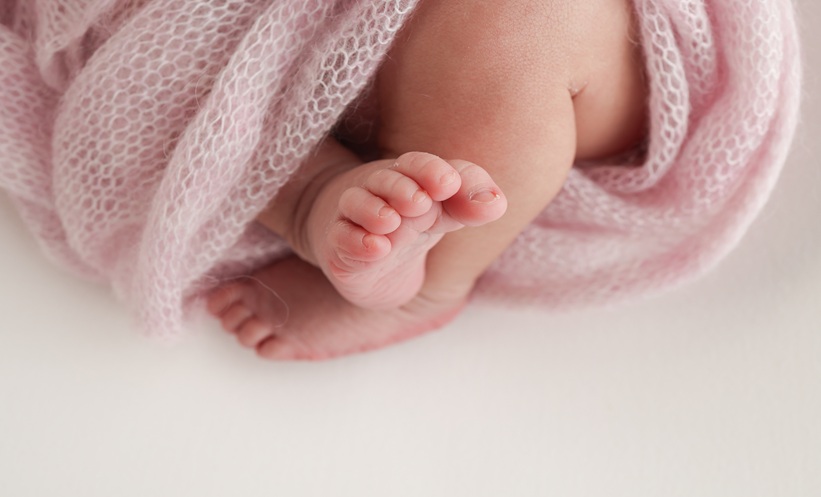Abstract
Infertility is generally defined as the failure to conceive after ≥1 year of unprotected sexual intercourse. Because infertility tends to be multicausal, fibroids (as the sole identified factor for infertility) were only identified in about 2.4% of patients. Uterine fibroids, also known as myomas, are benign growths of the uterus’ smooth muscle tissue. They are the most common tumours to be found in the lower abdomen in pre-menopausal women. Fibroids can be found in 30–40% of all women between the age of 30 and 40 but can occur at any age. Furthermore, they are more prevalent in African women than in women of other ethnicities. The relationship between fibroids and infertility is especially difficult because of the heterogeneity of the fibroids regarding their size, location, and number, as well as the heterogeneity in observed patient populations. Even though a number of studies have attempted to clarify the influence of fibroids on fertility, there have been various, sometimes contradictory, findings and a lack of well-designed trials.
INTRODUCTION
Definition and Epidemiology
Uterine fibroids, also known as myomas, are benign growths of the uterus’ smooth muscle tissue. They are the most common tumours to be found in the lower abdomen in pre-menopausal women. Fibroids can be found in 30–40% of all women between the age of 30 and 40 but can occur at any age.1,2 Furthermore, they are more prevalent in African women in comparison to women of other ethnicities.3-5
Associated Factors
The growth of fibroids is positively associated with oestrogen stimulation leading to a reduction of fibroids as the menopause commences.1,6 Thus, an early onset of menarche, a late beginning of menopause, obesity, and a high level of gonadotropins7 show a correlation to the development of fibroids. Genetics are another factor to be considered.
Types of Fibroids
Fibroids vary in their size, number, and location. There are three main types of fibroids depending on their location in the uterus. There are many classifications of fibroids.8,9 However, the International Federation of Gynecology and Obstetrics (FIGO) classification is the most recent and it is used worldwide.10
Intramural fibroids (FIGO L3–L4) are the most common type in which the fibroid is located in the muscle wall of the womb. Subserosal fibroids (FIGO L5–L7) are situated outside the muscle wall and grow into the direction of the pelvis. Submucosal fibroids (FIGO L0–L2) develop in the myometrium right beneath the endometrium and can grow into the uterine cavity. Furthermore, fibroids can be either pedunculated or directly attached to the uterus. Depending on their location, the symptoms caused by fibroids can vary.11
General Symptoms
Fibroids are often asymptomatic.1 However, they can account for a number of symptoms such as menstruation changes (hypermenorrhoea, menorrhagia, dysmenorrhoea, and subsequent anaemia), dyspareunia, and bladder and bowel irritation due to size.12,13 Specifically, fibroids can also show an association with reduced fertility, infertility, or miscarriages, which will be discussed more closely.
INFERTILITY
Infertility is generally defined as the failure to conceive after ≥1 year of unprotected sexual intercourse. There is prevalence of 16% after 1 year in the general population and a prevalence of 8% after 2 years. Primary infertility refers to a couple who have had no previous pregnancies before, whereas secondary infertility refers to having failed to conceive following the last pregnancy. Medical investigation is generally recommended after unsuccessful conception after 1 year.14
Male and female factors can lead to infertility, thus both the female and male partner need to be investigated. Male factors can include abnormal semen analysis, surgical pelvic procedures, endocrinological conditions, drug abuse, and genetic disorders. Female risk factors for infertility or reduced fertility can be an age of >35 years, menstrual irregularity, history of pelvic inflammatory disease or sexually transmitted diseases, endometriosis, over and underweight, previous pelvic surgeries, and the presence of fibroids.15 Because infertility tends to be multicausal, fibroids (as the sole identified factor for infertility) were only identified in about 2.4% of patients.16
Potential Influence of Fibroids on Fertility from a Biological Perspective
There are a number of different mechanisms through which fibroids negatively influence fertility. Firstly, enlarged size or specific location fibroids can hinder the transport of the sperm and egg, as well as their implantation.11,17,18
Secondly, the presence of submucosal fibroids seems to influence levels of IL-10 and glycodelin. These cytokines are supposed to support the implantation and early embryonic development. In the presence of fibroids, they appear to be reduced.17
Thirdly, Purohit et al.17 and Yoshino et al.19 have found that fibroids seem to alter uterine contractions leading to an inflammatory reaction in the uterus. The latter may hinder implantation.
Fourthly, it is reported that the presence of fibroids leads to a change in the endomyometrial junctional zone. This zone regularly consists of macrophages and natural killer cells that contribute to the endometrial decidualisation during implantation. Some studies have shown that, fibroids are associated with the reduction of those cells.20,21
The thickness of fibroid pseudo capsule (a neurovascular bundle surrounding the fibroid that is rich in neurofibres) is considerably higher near the endometrial cavity compared to intramural and subserous fibroid, suggesting a potential role in fertility.22
Reduced fertility can have a number of causes, and the ones mentioned above are not to be considered as separate or monocausal. The relationship between fibroids and infertility is especially difficult because of the heterogeneity of the fibroids regarding their size, location, and number, as well as the heterogeneity in observed patient populations.21 Even though a number of studies have attempted to clarify the influence of fibroids on fertility, there have been various, sometimes contradictory, findings and a lack of well-designed trials.17
The findings from recent studies and reviews will now be discussed to try to give a recent view on the relationship between fibroids and fertility.
Influence of Fibroids on Fertility
The probability of clinical pregnancy, implantation, and live birth in women with fibroids was significantly lower, while abortion rates were higher in comparison to the control group independent of the fibroids’ location.21,23 Looking more closely at the fibroids’ location, it has been found that intramural fibroids and submucosal fibroids with intracavitary distortion were associated with lower pregnancy, implantation, and live birth rates in comparison with women with no fibroids, whereas there was no difference found for subserosal fibroids.21,24 Generally, submucosal fibroids are associated with a 70% reduction in delivery rate, intramural with a reduction of 30%.25-27 It is thought that the size of the fibroid (2–6 cm) does not impact fertility outcomes;22 however, recent studies have shown that fibroids size in-fact does have an effect: intramural fibroids of size >4 cm were seen to be associated with statistically lower pregnancy rates in comparison to smaller intramural fibroids.28-30 The effect of size could thus be seen in combination with the fibroids’ location.
In general, one can state that the diverse findings show the need for more controlled, high-quality studies.
In Vitro Fertilisation
Studies have also specifically focussed on the relationship between fibroids and in vitro fertilisation (IVF) outcomes. As with regular pregnancy, submucous fibroids and intramural fibroids distorting the uterine cavity are connected to lower pregnancy rates, delivery rates, and higher spontaneous abortion rate after IVF or intracytoplasmic sperm injection.
For intramural non-cavity distorting fibroids, no difference regarding IVF outcomes has been found.31 Vimercati et al.,32 on the other hand, have found no significant difference in the implantation, miscarriage, and pregnancy rates after IVF between submucosal, subserous, and intramural fibroids at all. Yet, they found the size of the fibroid to be negatively correlated with fertility.
Klatsky et al.33 found no difference in implantation or clinical pregnancy rate in women with fibroids in comparison to women without when they received donor oocytes through assisted reproductive technology. Somigliana et al.34 observed no effect of fibroids with a diameter <5 cm which are not distorting the endometrial contour on pregnancy rates. On the contrary, a review of 19 studies conducted by Sunkara et al.35 in 2010 showed a statistically relevant inverse correlation of non-cavity distorting intramural fibroids and live birth rate as well as clinical pregnancy rate.
Thus, also regarding IVF, the contradicting findings show the need for more controlled studies and hint at a more than monocausal relationship between fibroids and the success of IVF.
TREATMENT OPTIONS FOR FIBROIDS AND INFERTILITY
Myomectomy
Myomectomy as a potential surgical treatment for fibroids has been explored in many case studies. In general, approximately 50% of women with infertility and fibroids become pregnant after myomectomy,16 although the numbers differ depending on the study. Whether performed hysteroscopically or by laparotomy, myomectomy has led to a rise in pregnancy rates;17,27 however, only the rise regarding submucosal fibroids was statistically significant.17 Then again, the literature review has shown that myomectomy before IVF has significantly increased the success rate in fibroids without submucosal component.28
Because of the divided findings in literature, Purohit et al.17 conclude that the benefit of myomectomy highly depends on the location and size of the fibroids. There is little evidence for a beneficiary effect regarding subserosal fibroids since they appear to have little effect on a woman’s fertility. For submucosal fibroids, a positive effect on pregnancy and live birth rates is stated. For intramural fibroids, the evidence remains unclear as there is a higher risk of postoperative complications, such as adhesions that can lead to infertility by themselves.17 A study performed by Casini et al.29 suggested that a pregnancy rate of 56.5% in women with intramural fibroids and myomectomy in comparison to 41.0% without myomectomy. However, the higher rate was not statistically significant, thus myomectomy for intramural fibroids should be considered individually depending on exact size, number, and location.17
Hysteroscopic myomectomy is recommended for fibroids located in the cavity (FIGO L0–L1). In L2, up to 5 cm fibroids hysteroscopy is possible, however, it might have to be carried out in multiple-stage procedures. It is highly necessary to take into consideration the possible operation-related intrauterine adhesions and endometrial damage which are negatively correlated to reproductive outcomes.17
In larger fibroids (FIGO L2 >5 cm and above) management by laparotomy or laparoscopy should be considered. A systematic review of the data has shown a similar outcome for both approaches. Metwally et al.36 suggest that there is no statistically significant difference in live birth rate, pregnancy rate, miscarriage rate, and preterm delivery rate between open and laparoscopic myomectomy.
Yet, for the laparoscopic procedure, reduced blood loss and shorter inpatient stays were noted.17 In laparoscopic myomectomies, a significantly lower risk of infertility fostering adhesions were found in comparison to laparotomy.16 Another general risk includes uterine rupture during pregnancy or labour, leading to a higher rate of caesarean section, of which is preventable. However, it is unclear if laparoscopic myomectomy increases the risk of rupture significantly.16
Kameda et al.37 found that laparoscopic uterine myomectomy was successful in 45.7% of infertile patients with no known cause but fibroids in comparison to 28.6% without laparoscopic treatment, yet the difference was not significant. If the number of fibroids was ≤3, the difference became statistically significant. Also, in patients with four–nine fibroids, the myomectomy showed a pregnancy rate of 64.7% with no pregnancies in patients without myomectomy. In patients with >10 fibroids however, no pregnancy could be achieved.
Medical Treatment
While the application of hormones, through, for instance, the combined oral contraceptive pill, progesterone-only pill, and levonorgestrel intrauterine systems, is commonly used to improve pain and menstrual complaints due to fibroids, they are not applicable to infertile women because of their contraceptive effect.
Ulipristal acetate (UPA), a progesterone receptor modulator, is a licensed option for uterine fibroids because of its size reducing effect by increasing the apoptosis of leiomyoma cells. The therapy is limited to 3 months and its effect lasts for about 6 months without surgery.
Luyckx et al.38 conducted a study with 52 patients receiving UPA with 21 patients wishing to conceive. From 3 months after the end of UPA therapy, 15 of the 21 patients (71.0%) became pregnant, with a total of 18 pregnancies, of which, 12 pregnancies resulted in the delivery of 13 babies and 6 resulted in miscarriages.
Purohit et al.17 pointed out that the study done by Luyckx et al.38 had shown that despite the size reduction of fibroids and possible conception after the end of the UPA therapy, there has been a higher rate of miscarriages if women did not undergo myomectomy as well, thus, surgical management is additionally being recommended.
Uterine Artery Embolisation
Uterine artery embolisation39 leads to an ischaemia for approximately 72 hours in the uterus and was previously seen as a treatment for women with fibroids and without a wish to conceive a child when it was established in 1995. Even though the ischaemic effect was supposed to be only irreversible within the fibroid, there are concerns that not only the uterine, but also the ovarian function, can be irreversibly affected as well in certain women. In patients <35 years of age, uterine artery embolisation has lower pregnancy rates in comparison to myomectomy, as well as longer conception time. Moreover, the number of live births was significantly lower and the number of early miscarriages higher in women with uterine artery embolisation (60.0% in comparison to 23.0% after myomectomy),40 indicating a superiority of myomectomy.
However, Mohan et al.41 suggest in their review analysing 23 studies that the cumulative pregnancy rate of 58.6% in women with a mean age of 35.9 years after having undergone uterine artery embolisation is comparable to the age-adjusted pregnancy rate in the population. The cumulative miscarriage rate due to their findings was 28.0%, which is comparable to the rate in the general population.41
On the contrary, another review conducted by Karlsen et al.42 in 2018, including 17 studies with 989 patients, found lower pregnancy rates and higher miscarriage rates after uterine artery embolisation in comparison to myomectomy, supporting the Mara et al.40 findings above.
Czuczwar et al.43 compared UPA and uterine artery embolisation on ovarian reserve after 3 months. There was a significant reduction in anti-Müllerian hormone and an increase in follicle-stimulating hormone. However, in the UPA group there were no significant changes.
In alignment with the contrasting findings, the authors refer to the low quality of evidence which can be deducted from the studies, highlighting the need for randomised studies in the future.42
Magnetic Resonance-Guided Focussed Ultrasound
Magnetic resonance-guided focussed ultrasound (MRgFUS) applies microbeam radiation therapy-directed beams of ultrasound to heat specific areas of a fibroids and cause destruction through necrosis.14 The treatment was first established in 2000 for fibroids. According to Rabinovici et al.,44 MRgFUS was limited to patients declaring their non-interest in further pregnancies. However, a number of case reports of pregnancies after the treatment have been published with a total of 51 women. A total of 54 pregnancies have occurred, with a live birth rate of 41% and a spontaneous abortion rate of 28%. The mean birth weight was 3.3 kg with a vaginal delivery rate of 64%.44 These outcomes are supported by other case reports45 and suggest a promising role for MRgFUS related to the treatment of infertility in patients with fibroids which should be investigated further.
CONCLUSION
The effects of fibroids on fertility and its management on improving fertility are inconclusive. The management should be individualised depending on the classification of the fibroids in relation to endometrium. Hysteroscopic excision of the submucosal fibroids should be considered before starting fertility treatment. With regards to intramural fibroids, it is individualised according to its relation to the uterine cavity. The subserosal fibroid is unlikely to have an impact on fertility. Medical, UPA, and MrgRUS are not recommended for women who desire fertility treatment.








